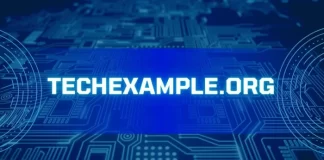Competitions help the participants to identify their strengths and weaknesses, so as not to be complacent. It allows them to understand their strengths, but also not to be complacent. Many competitions test participants of their knowledge in various subjects, like science, maths, geography, and others. An interesting competition for you to participate in is the National Maths Talent Contest. Who is eligible? What is the exam pattern? And where can one find resources? This article will answer that and more.
A. What is it about?
NMTC is a national talent search contest that focuses on testing the students in mathematics and how each of them solves problems. The first contest was launched in 1968 by an organisation called the Association of Mathematics Teachers of India (AMTI), a group comprised of experts and other individuals, and was established by R. Vaidyanathaswamy.
B. Objectives:
Here are the main objectives of NMTC:
a. To encourage talent:
This contest aims to encourage and help students to improve their talents. Many are afraid of participation or have a fear of failure, but this competition hopes to increase the confidence of students to compete at a larger scale and also give them an opportunity to shine and make a name for themselves in the field at a young age.
b. To promote problem-solving:
Mathematics is a subject that requires memory, concentration, and skills. Not all may have it, but for the ones who do, this is a splendid opportunity to prove themselves. The exam is designed in such a way that encourages quick thinking and detailed problem analysis, and finding the best or unique solution.
c. Prepare students:
The syllabus of the competition may also coincide with their exam portions, which helps students prepare for them easily. Also, these contests will encourage students and help them ace bigger exams with confidence.
d. Promote love:
Such contests also inculcate interest and fondness for mathematics in students at a young age, which also influences them to choose their career in maths-related fields.
e. Enhance Logical thinking:
NMTC also allows students to think beyond their textbooks or known procedures. It helps them to think differently and more logically, so one question can be solved in many ways. And this creative thinking is valuable to them while participating in larger examinations that can determine their lives.
C. Eligible candidates:
So, who is eligible for participation? NMTC is for students from the 5th class to Undergraduate students from college, which makes an impressive range. But the same test of the same syllabus and levels cannot be given to all students. Hence, they are further classified into five categories: 5th and 6th classes (Primary level), 7th and 8th classes (Sub-Junior level), 9th and 10th classes (Junior level), 11th and 12th classes (Inter level), and Undergraduate college students (Senior level). Each level of students writes a different test, which will be listed below.
| Classes | Test name | Level name |
| 5th and 6th classes | Gauss Test | Primary level |
| 7th and 8th classes | Kaprekar Test | Sub-Junior level |
| 9th and 10th classes | Bhaskara Test | Junior level |
| 11th and 12th classes | Ramanujan Test | Inter level |
| Undergraduate college students | Aryabhata Test | Senior level |
D. Exam Pattern:
All levels of students (except the Senior level, who only have the first stage) have the same exam patterns: two stages. The first stage is the Preliminary Test, which is objective and consists of MCQs or Fill-in-the-blanks. And the Final stage is of descriptive format, where the students have to write down everything that led them to their answer, as marks are awarded accordingly. And there is a possibility for partial credit, even if the answer is wrong, but the procedure is reasonable.
a. Preliminary round:
This is an online exam where students need to answer 20-30 questions in 2 hours, which will be in the MCQs and fill-in-the-blanks format. The top 10% will be awarded certificates, and those will be used as hall tickets for the next round. Also, it will be held in the school of the students. There are negative marks in this round, with a 0.5 deduction for MCQs and a 0.25 deduction for fill-in-the-blanks questions.
b. Final round:
This is an offline exam, where students have to face the descriptive format and answer around 8-10 questions in 3 hours. This exam will be held in AMTI-specified centres and students are expected to answer the question fully, i.e, write down all steps that led them to their answers.
E. Syllabi:
The syllabi for each round are different but correspond with the ones students have studied in their schools. Here is a detailed list of what one can look forward to in the NMTC test:
| Name of the level/ Test | Classes | Topics |
| Primary level, Gauss Test | 5th and 6th classes | Addition, subtraction, multiplication, division, Fractions, decimals, factors, multiples, ratio and proportion, patterns, time, speed, and distance, profit and loss, simple word problems, area and perimeter of square, rectangle, and triangle, basic angles, symmetry, calendar and clock problems, and logical reasoning |
| Sub-junior level, Kaprekar Test | 7th and 8th classes | Square and square roots, cubes and cube roots, and integers, rational numbers, ratios and proportion, profit and loss, allegation, mixtures, triangles and triangle inequalities, speed, time, and distance, mesuration (cube, cuboid, cylinder, sphere, cones, and cylinders), algebraic identities, laws of indices, basic surds, and Divisibility |
| Junior level, Bhaskara Test | 9th and 10th classes | Quadratic and higher degree questions, modular arithmetic, Apollonius theorem, Stewart Theorem, Alternate segment theorem, Intersecting chord theorems, circle theorems, Pigeon hole principle, principle of inclusion and exclusion, remainder theorem, basic statistics and probability |
| Inter level, Ramanujan Test | 11th and 12th classes | Polynomials, inequalities, Fermat’s and Wilson’s Theorem, recurrence, relations, Vector and Coordinate geometry, functions and graphs, Binomial theorem, sequences and series, probability, permutations and combinations, logic and set theory |
| Senior level, Aryabhata Test | Undergraduate college students | Abstract algebra (rings, fields, and groups), real and complex analysis, differential and integral calculus, probability and statistics, advanced geometry— Mostly coinciding with B.Sc. Mathematics syllabus |
F. Resources:
Here is a list of resources that may prove to be helpful while preparing for this contest:
- Workbooks and YouTube videos
- Sample papers and previous year question papers
- Olympiad textbooks and workbooks
- NCERT Textbooks
- Online courses and online PDFs
- AMTI’s NTMC Sample Papers
- R.S. Aggarwal
- Apps like Vedantu and BYJU’S
- Khan Academy online and offline resources
G. Regulations:
There are a few rules to keep in mind before and while attempting the exam:
- The contest is available from the 5th class to Undergraduate students.
- All students must register through their schools and institutions, as individual registrations are not accepted by AMTI.
- Students are asked to write the contest of the level they are categorised into. Also, a student can only write at a level once.
- The registration fee is 150/- for all students.
- Schools also need to nominate one of their teachers as a coordinator for AMTI.
- Candidates for the exam must be in the exam hall 30 minutes before.
- No calculators, smartphones, smart watches, or any other digital devices are allowed in the examination hall.
- Borrowing stationery while writing the exam is not allowed, so students must bring their own stationery, which is required for the test.
- For the final round, students are allowed to use either a blue or black pen for their answers.
- Rough sheets will be provided in the exam, and students should not write anything on the question paper.
H. Awards:
The top 10% from the Preliminary round move to the Final round. And the winners are awarded with certificates, medals, and even opportunities to participate in other events organised by AMTI:
- National rankers: Winners from each level will receive cash prizes, medals, and certificates of merit. They may also receive sponsorships and other chances to participate in related events.
- High Achievers: Winners receive silver and bronze medals accordingly, certificates of merit, and academic gifts like books.
- Students of the final round receive recognition and certificates of participation.
- Schools and their coordinators also receive recognition and certificates of appreciation for maintaining decorum and integrity.
- For higher classes, they may receive more opportunities, like participation in Olympiads and other competitions.
I. Similair competitions:
Here is a small list of similar contests that might intrigue students and encourage them to showcase their skills:
- Regional Mathematics Olympiad (RMO), which is held for 8th- 12th classes, helps foster a love for maths at a young age.
- International Mathematical Olympiad (IMO), which is conducted by Science Olympiad Foundation (SOF), is for classes 1st- 12th.
- The ISI Entrance exam, which is conducted for 11th- 12th and Degree students, allows them to find more opportunities.
- Vidyarthi Vignan Manthan (VVM): It is also an interesting maths contest, and is a collaborative effort of Vijnana Bharti (VIBHA), NCERT, and others.
- Aryabhata Ganit Challenge (AGC): For classes 8th to 10th, and it is conducted by CBSE, to encourage and promote logic, reasoning, and quick problem-solving.
To conclude, the National Maths Talent Contest (NMTC) is a competition with a considerable range and engaging topics that help students prepare with enough competitiveness and motivation. Preparing for the NMTC will not only increase the confidence of students but will also enhance their quick thinking and problem-solving abilities. And for more information about the contest, updates, and resources, you can visit the official website: https://amtionline.com
Also read: KAMP NASTA EXAM










